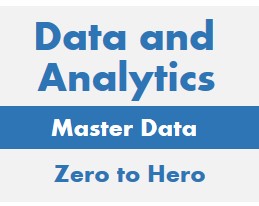


Data And Analytics (DAA) benefits are attractive, but will not likely be achieved unless there is an effective strategy for doing so. DAA strategy supports enterprise strategy and gives DAA and its critical enabler Enterprise Information Management (EIM) a seat at the executive level of the organization. The Data Strategy has come to be on the same level of importance as other strategies like financial, customer, operations and people strategies.
What is the best way to create the DAA Strategy? We recommend a Six Step approach to developing the DAA Strategy. These steps are illustrated in the following diagram,

In summary, the steps are:
The DAA community should be strategic partner and collaborate with executive management. (Create your own seat at the table cartoon.)
A separate, detailed tutorial about the DAA Strategy approach is under development. Check back again soon.
Infogoal.com is organized to help you gain mastery.
Examples may be simplified to facilitate learning.
Content is reviewed for errors but is not warranted to be 100% correct.
In order to use this site, you must read and agree to the
terms of use, privacy policy and cookie policy.
Copyright 2006-2020 by Infogoal, LLC. All Rights Reserved.
